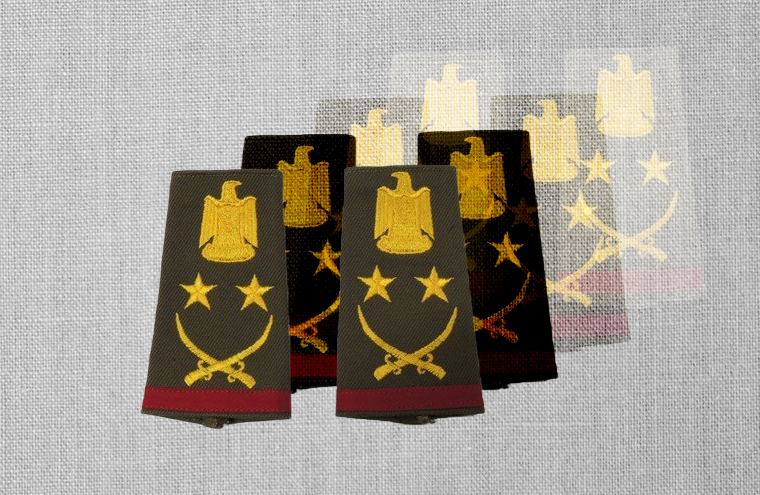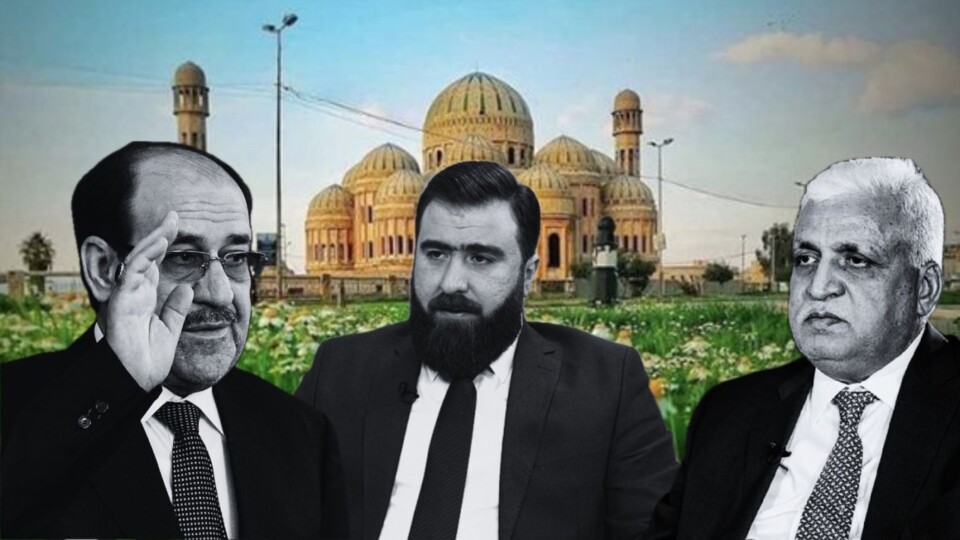

Similar to other institutions in Iraq and its key components, the restructured security apparatus, under the leadership of the military governor of Iraq following the invasion, Paul Bremer, experienced fluctuations, uncertainties, and periods of both erosion and occasional progress. This beleaguered institution had already weathered two devastating wars during the reign of former President Saddam Hussein, only to encounter further challenges and constraints in the two decades following his downfall.
According to the provisions of the new system’s constitution, the Prime Minister is granted the overall leadership of the armed forces. After multiple experiments and the formation and dissolution of agencies, it can be said that the military security institution in Iraq has based on three main pillars: The Ministry of Defense, the Ministry of Interior, and other agencies directly linked to the Prime Minister’s office.
Similarly, during Saddam Hussein’s presidency, the security and military forces were divided into two main ministries: Defense and Interior. They were supplemented by a few agencies and formations directly linked to the President, the Supreme Commander of the Armed Forces. In general, the Iraqi security forces consisted of the Republican Guard, the Regular Army, and popular organizations, in addition to the Internal Security Forces, Border Guards, and Saddam’s Fedayeen (Saddam’s Men of Sacrifice).
Kernel of Invasion
After the invasion and Prime Minister Bremer’s decision to dissolve the existing army, the new army was established by integrating fighters from armed factions and some elements from the new parties. They formed its kernel, and junior officers from the rank of colonel were summoned to establish the first corps based on a sectarian and ethnic structure.
At the same time, high military ranks were granted to fighters from those factions and parties, and they were given important positions alongside the “Jihad Service,” which was one of the forms of making amends that served as compensation for their period of opposition outside Iraq and considered continuous service. This led to the emergence of the term “integration officers” in popular circles and even within the military and security ranks, mocking the missed opportunity to establish a national army transcending sectarian and ethnic divisions.
Additionally, the private security company “Vinyl,” responsible for training the new Iraqi army fighters, classified recruits based on their ethnicity and sectarian affiliation during training sessions. This resulted in incidents of sectarian or ethnic friction among the members of the new army’s kernel.
The control of quota-based parties and factions over the new institution served two purposes: firstly, a corrupt bureaucracy facilitated the embezzlement of a significant portion of these institutions’ budgets, and secondly, it ensured the loyalty of this institution to the existing regime and its protection by any means, even if destructive.
The problem that affected the military security institution can be viewed from several angles, one of which is the number of personnel.
Iraqi Army Personnel Count Before and After 2003
The ranking of Iraqi Army reached the fifth position globally as the strongest regular army in 1990. However, in 2003, it witnessed a decline to its lowest levels before its dissolution and the establishment of a new one.
During 1985-1989, when Iraq was engaged in a war with Iran, the number of soldiers in the army reached one million. In 1990, the army’s size increased by 39%, reaching 1,390,000 soldiers (equivalent to 33% of Iraq’s total workforce that year). However, following the invasion of Kuwait, its strength declined by approximately 66%, reducing the number to 475,000 soldiers.
During the years of siege, from 1992 to 2002, the number of soldiers in the Iraqi Army ranged between 407,000 and 479,000 (7-9% of the total workforce). In the year of the fall of the regime in 2003, the number of Iraqi Army soldiers was 432,000.
After 2003, the new authority eliminated the requirement for compulsory military service and allowed individuals to volunteer instead. The size of the Iraqi army grew steadily, with 179,000 soldiers in 2004, 227,000 in 2005, and 495,000 in 2006. It reached its highest point in 2012, with a total of 802,000 soldiers.
The following year after reaching its peak, there was a significant decline in the number of personnel, as around 625,000 soldiers left the service. By 2013, the number of army soldiers had reduced to approximately 177,000.
This significant decrease indicates the absence of a solid military doctrine, as the heightened security tensions in Syria at that time and their spillover effect on Iraq, along with the emergence and expansion of terrorist factions, led 78% of the army personnel to leave the service. Only 22% remained to confront the incoming terrorist forces seeking to establish their state.
The collapse of the security forces also brought attention to the issue of “ghost soldiers” – a popular term used by Iraqis to refer to fictitious names registered as soldiers in the Iraqi army who do not exist. Their purpose is to receive salaries that are then channeled to the political entity responsible for their registration. The majority of forces, regardless of their backgrounds, participated in the corruption associated with this issue. Former Prime Minister Haider al-Abadi, who assumed power in 2014 after Nouri al-Maliki, revealed the existence of over 50,000 ghost soldiers, whose salaries were being diverted to high-ranking officers and “integration officers.”
The number of soldiers reached 209,000 during the war with ISIS from 2014 to 2017, and it increased to 341,000 in 2019. By the year 2023, the Iraqi army had dropped 11 ranks globally, now occupying the 45th position. Previously, in the preceding year, it held the 34th position. The army consists of approximately 200,000 soldiers, along with 130,000 personnel representing semi-military forces. However, there are no reserve forces available.
The Ministry of Defense holds authority over all branches of the armed forces, which include the Ground Force, Air Force, Navy, Army Aviation, Air Defense, and other branches. The Ground Force is the largest branch in terms of numbers, while the Air Force is the most controversial and subject to political divisions.
The Iraqi Air Force possesses a fleet of 290 aircraft, a significant portion of which is dedicated to training and reconnaissance purposes. The F-16 aircraft stands out as the most prominent and advanced aircraft in the Iraqi Air Force fleet. Since 2003, this force has been under Kurdish control, with only three individuals having held its leadership: Kamal Barzanji, Anwar Hamah Amin, and Shihab Jahid Hamah Khan Zangana. Since that time, the Iraqi Air Force has been embroiled in a political struggle concerning both positions within the force and the identification of its pilots.
The Ministry of Interior’s personnel
Regarding the Ministry of Interior, the number of its personnel has increased by nearly 13 times. After 20 years after the occupation, the ministry now has around 650,000 members, a significant rise from the approximately 40,000 members before 2003. The ministry has experienced the appointment of 12 ministers, and since 2006, it has been allocated to the Shia community as part of the political division of ministries. In contrast, the Ministry of Defense was assigned to the Sunni community.
The Ministry of Interior includes several security agencies and police units, among the most prominent are the local police forces, which operate in each province and consist of individuals from that province. In addition, there are the federal police forces, the border forces administration, the facilities protection police, the special police forces, the antiquities and heritage protection police, the counter-terrorism directorate, the community police, as well as others dedicated to combating drugs, emergency response, rapid intervention, and civil defense.
Furthermore, these agencies and police units also include intelligence units and incorporate emergency brigades and special forces within these agencies, in addition to the criminal evidence unit which is related to the provincial police and is overseen by the General Directorate of Criminal Evidence in the ministry. The federal police resemble the Iraqi army in its structure and training.
The military training file is considered one of the most prominent files that have been turned upside down during the previous and current eras of governance. It previously possessed the required precision, enabling it to create forces capable of competing with regional and global powers in this field. However, today, it has become engulfed in confusion, corruption, favoritism, and ambiguity.
The training approach in the Ministries of Defense and Interior is largely superficial and relies on the personal judgments of the leadership as well as the connections and knowledge of individuals. Additionally, there are various international training sources, leading to an influx of military personnel without clear guidelines, responsibilities, and rights. This raises concerns about the effectiveness of the significant annual expenditure on these forces.
Security spending and arming the forces
The new Iraq started its financial path with a budget of $13 billion in 2003, with a mere 1% allocated to the security sector. The peak of expenditure was reached in 2015, when the security sector accounted for 12.5% of the total general budget, reaching around $105 billion. This increase was logical as it coincided with the year of the most significant and critical battles to liberate the areas occupied by ISIS.
The expansion of this institution and the increase in its budget allocations have transformed it into a sector where militias and political parties, who share power and influence, engage in intense competition. This was disclosed in a leaked recording by Nouri al-Maliki, the Secretary-General of the Islamic Dawa Party and former Prime Minister. The recording revealed Hadi al-Amiri, the leader of the “Badr Organization,” exerting control over 40,000 salaries, while Muqtada al-Sadr received 12,000 salaries designated for the “Saraya al-Salam” within the military institution. Moreover, there are political entities that possess fixed shares within the security institutions.
The performance of the security apparatus over the past two decades has failed to provide security or effectively combat terrorism without significant international interventions and substantial financial, strategic, and military support. Among the reasons for the failure of the security apparatus is the intersection of interests and gains of political parties and blocs, the majority of whose elements are part of the same security apparatus. Additionally, there are weaknesses in training, and arming, and numerous gaps in military logistics services. Furthermore, the Iraqi security apparatus requires a thorough filtering process to remove those affiliated with armed gangs, in addition to the need for training and equipping them with the latest devices and equipment.
The official spokesperson for the Joint Operations Command, Brigadier General Yahya Rasool, revealed that the security apparatus did not play a sufficient role in protecting Iraq, pointing out that the construction of the army and security apparatus in 2003 was rushed. Subsequently, the army was engaged in securing and protecting the city of Baghdad through checkpoints and patrols following the eruption of violence and sectarianism. He emphasized that the Iraqi military leadership at the highest levels has been attentive to these failures and shortcomings, especially after the events in Mosul, Salahuddin, and Ramadi.
These failures, as indicated by Rasool, raise many questions about the reason behind the absence or weakness of the role of all security institutions collectively, despite their abundance, complexity, and diverse operational frameworks, in addition to their official status.
The Prime Minister’s agencies
In addition to the Ministry of Defense and the Ministry of Interior, four security agencies directly report to the office of the Prime Minister, who is the Commander-in-Chief of the Armed Forces. These agencies are as follows: The Intelligence Agency (established in 2004), the National Security Agency (2004), the Counter-Terrorism Agency (2007), and the Popular Mobilization Commission (2014).
In theory, the Iraqi Intelligence Agency and the National Security Agency are considered among the most important security agencies in the country. The former is entrusted with the task of preserving Iraqi national security by operating both domestically and internationally, based on the principles of external and internal intelligence simultaneously.
The agency’s main tasks involve collecting information and assessing threats that pose a risk to Iraqi national security. It then uses this information to offer advice to the Iraqi government and provide intelligence support to the armed forces in all branches.
Rumors have circulated about the close relationship between the intelligence agency and the United States, which has made it an unpopular agency among armed factions. This even led to accusations of providing intelligence information to the US government, assisting them in carrying out the operation that targeted Qasem Soleimani, the commander of the Quds Force, and his companions near Baghdad Airport at the beginning of 2020.
On the other hand, the agency has also achieved some success. It has provided information that led to the killing of the leader of ISIS, Abu Bakr al-Baghdadi, as well as information that contributed to the capture of his deputy, Sami Jasim al-Jabouri. Additionally, it has carried out numerous successful operations at the internal and regional levels.
Over the past two decades, five individuals have held the position of director of the intelligence agency since its re-establishment. They are Mohammed Abdullah al-Shahwani between 2004 and 2009, and Zuheir al-Gharawi from 2009 to 2016. He was succeeded by Mustafa al-Kadhimi, who assumed office in 2016 until 2020 when he became the Prime Minister. As Prime Minister, he acted as the agency’s interim director, and towards the end of his tenure, he appointed Judge Raed Jouhi (famous for issuing an arrest warrant against Muqtada al-Sadr in 2004) to lead the agency. However, Jouhi was dismissed from his position as soon as Mohammed Shia’ Al-Sudani took over the reins of power, and the new Prime Minister decided to personally supervise the agency.
The National Security Agency, as it defines itself, focuses on preserving security within the country by operating internal intelligence units. Its activities primarily take place within the national borders. In essence, it bears similarities to the pre-invasion General Security Directorate that existed in Iraq before 2003.
The Counter-Terrorism Unit was established in 2007 following the separation of the Iraqi Special Forces from the Ministry of Defense. Initially known as the Special Operations Command, it was later renamed the First Special Operations Command. About three years later, the Second Special Operations Command was formed, with a larger workforce, improved funding, and expanded responsibilities. This transformation propelled it to become the foremost specialized force in the country for counter-terrorism operations, distinguished by its exceptional training, advanced weaponry, and expertise.
Al Hashd al-Shaabi
The Popular Mobilization Forces (PMF), also known as the Hashd al-Shaabi, were formed under tense circumstances and distorted legal frameworks. After the occupation of Mosul, the capital of Nineveh province, by the ISIS organization, and the issuance of a famous fatwa called “al-Jihad al-Kafa’i” by the high Shia religious reference in Iraq, Grand Ayatollah Ali al-Sistani, tens of thousands of volunteers emerged. The Ministry of Defense was unable to accommodate them due to organizational and political reasons. The PMF was established as a result, with its core factions consisting of armed groups affiliated or closely linked to Iran and active in Syria, defending the regime of Bashar al-Assad since 2011. It received unlimited support from former Prime Minister Nouri al-Maliki, known for his close ties to Iran. Additionally, it attracted thousands of volunteers who responded to the religious fatwa out of ideological motivations.
Many leaders of the factions openly declared at the beginning of its establishment that the Popular Mobilization Forces (PMF) is an ideological sectarian project aiming to become the Iraqi version of the Iranian Islamic Revolutionary Guard Corps (IRGC). They stated that their absolute loyalty is to the Iranian Supreme Leader, Ali Khamenei. This became even more evident with the spread of numerous recorded videos showing the training of the newly formed PMF, featuring the famous phrase: “Is there a supporter who is ready to sacrifice? At your service, Khamenei.” On the other hand, forces were working to distance themselves from Iranian influence, emphasizing the PMF’s nationalism and its independence from any external party in decision-making.
The intertwining of military and religious authorities, national and sectarian orientations, the beliefs of leaders and individuals, and the legal and legislative frameworks have all presented challenges and complexities that have accompanied the controversial establishment of this entity to this day.
The path to creating an “Iraqi Revolutionary Guard” was not without obstacles. In 2016, former Prime Minister Haider al-Abadi issued a decree classifying the Popular Mobilization Forces (PMF) as an official force under the Prime Minister’s authority. This move was interpreted by proponents of state institutions as a penetration of the state and its security apparatus. On the other hand, those close to the PMF saw it as a step backward. Since then, the PMF has remained in its current legal and official status, with occasional events that highlight the fragility of this alliance. One notable incident was when armed elements associated with factions within the PMF carried out a drone attack on the residence of former Prime Minister Mustafa al-Kadhimi.
After the recognition of the PMF by the Prime Minister’s office, the Iraqi Parliament passed Law No. 40, which designated the PMF as an entity with legal personality and an integral part of the Iraqi armed forces, under the command of the Commander-in-Chief of the Armed Forces. The law also stipulated that PMF members who join this organization should detach themselves from any political, partisan, or social affiliations and prohibited political activities within its ranks. However, this provision has largely remained theoretical and not effectively implemented.
As time passed, the division between the PMF and the factions became increasingly clear, highlighting their dual identity. A certain brigade, for example, may officially be under the command of the Commander-in-Chief of the Armed Forces and follow their orders, but in reality, it may have internal and external allegiances that it carries out its commands and agendas. This has resulted in individual fighters finding themselves in conflicting positions, as they are both official members of the Iraqi armed forces and, at the same time, affiliated with armed factions outside the framework of the state.
Throughout the history of the Popular Mobilization Forces (PMF), which has been active for nearly 8 years, and its armed factions, some of which have been in existence for over two decades, numerous documented violations have accompanied their journey. This has led to prominent figures within their ranks, such as the head of the PMF, Falih al-Fayyadh, the chief of staff Abdul Aziz al-Muhammadawi, also known as “Abu Fadak,” as well as Qais al-Khazali, the leader of the Asa’ib Ahl al-Haq faction, and his brother Laith, being included on the sanction lists of the US Departments of State and Treasury. Additionally, other armed factions like Kata’ib Hezbollah, al-Nujaba, and others have also been included in these sanction lists.
Moreover, these factions have branched out and given rise to smaller and less prominent factions that carry out secondary agendas without attracting much attention. For example, there are factions like “As’hab al-Kahf” that target logistic support soldiers, and others like “Raba’ Allah” that engage in politically motivated attacks such as targeting media headquarters or detonating alcohol stores.
In addition to the aforementioned, the Popular Mobilization Forces and its factions are directly accused of crimes such as mass abductions, killings, and controlling territories in liberated provinces, refusing to return them to their rightful owners. This occurred during the battles to liberate those provinces and in the months that followed, notably in the Jurf al-Sakhar area in Babil, as well as various regions in Diyala, Mosul, Salahuddin, and Anbar. On another note, there are also allegations of these factions’ involvement in suppressing popular protests, such as the October 2019 demonstrations, as well as political protests, like the Sadr Movement’s incursion into the Green Zone in 2022.
The “Sinak Incident” during the October protests, which resulted in the deaths of around 23 people and 120 injuries at least, stands as one of the main pieces of evidence implicating PMF factions in the suppression of protesters. On that day, conflicting statements were issued. The first statement was from the then-Deputy Chairman of the Popular Mobilization Forces, Abu Mahdi al-Muhandis, who implicitly acknowledged the responsibility of PMF-affiliated elements for the incident, accusing the Peace Brigades of provoking the crisis. The second statement came from the head of the PMF, Falih al-Fayyadh, attempting to absolve the PMF and its factions of responsibility for the infamous massacre.
In a country where its security and military institutions are fragmented among various factions, labels, and affiliations, lacking walls to shield against external and internal infiltrations, and incapable of building a unified force isolated from corruption and the influence of its leaders and elders, the description of its security and military institutions as “fragile” would be an optimistic assessment at best. A national military and security institution can only be formed by rectifying the deep-rooted errors that have persisted for over 20 years. However, this correction will not be beneficial for leaders of the new quota.
Reports
Reports","field":"name"}],"number":"1","meta_query":[[]],"paged":1,"original_offset":0,"object_ids":23355}" data-page="1" data-max-pages="1">







